How To Repaire Plaster Wall
Planning & preparation
- A wall can become damaged for many reasons, only luckily carrying out repairs is relatively straightforward. Here nosotros volition testify you how to patch repair a wall, equally well equally how to repair small and big holes in plasterboard
- Deport in mind that the application method can vary between products, and then it's always best to check the manufacturer'southward instructions
- In that location are many different fillers and plaster products bachelor, then exist certain to consider the range and select a product that is best suited to your job. For example, if you only need a modest amount, you might find information technology easier to use set up mixed plaster
- Thorough preparation is key to achieving a high-quality finish, so be sure to remove all traces of old plaster, grit and grease for the area you lot programme to repair
- Lay out protective sheets to cover the floor and any nearby article of furniture
- Plow the radiators off in the room then the plaster doesn't dry out too quickly
- Some plaster products shouldn't be practical to a depth of more the 12mm in one get. If this is the case, yous may need to brand ii or more applications
- Most plasterboard comes in either 9.5mm or 12.5mm thickness, so try to replace similar-for-like when making repairs
- Have a saucepan of h2o to mitt when working and so you lot tin can make clean your trowel equally you demand to; this will help to avert lumps and unnecessary work
- For more advice, run into our online guides or leaflets 'How To Plaster a Wall' and 'How To Fix Walls & Ceilings for Decorating'
Do it right
- When working with plaster, it'south best to but work with modest amounts on the hawk and trowel. Try to build up a rhythm then you can cover the patch repair before the plaster starts to prepare
- Plaster tin dry out rapidly, and so don't mix upwards to too big a quantity at any one time
Staying safety
- If sanding plaster or cutting plasterboard, be sure to article of clothing goggles and a dust mask and endeavor to work in a well-ventilated infinite
- Always utilise a cable, pipe & stud detector before cutting or sawing into areas you're repairing
- When mixing or applying plaster, wear safety goggles, a grit mask and protective gloves
Aftercare
- Allow the plaster to dry naturally, so avert putting your heating on high for a few days
- To fix the surface for painting, sand with a fine grade sandpaper
- If yous are planning to paint the wall, information technology'southward a good idea to apply a sealer or primer pigment to help your finishing paint to adhere
Patch repair plaster to solid walls
Remove whatsoever damaged or loose plaster with a scraper. Then, use a wire brush to clean the surface area.
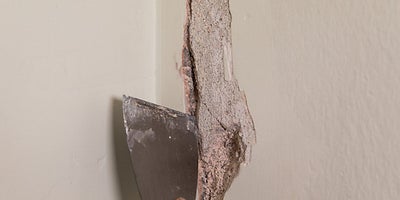
Thoroughly dampen the surface surrounding the repair with a mix of PVA gum and h2o.
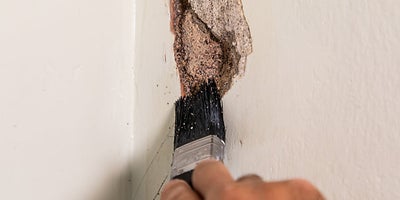
Post-obit the manufacturer's instructions, mix the quick-drying patch plaster.
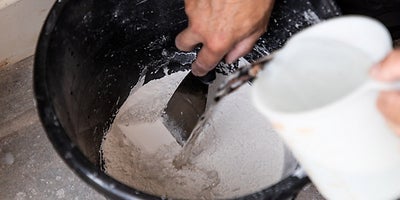
Using a plastering trowel, transfer a section of plaster to the plasterer's hawk.
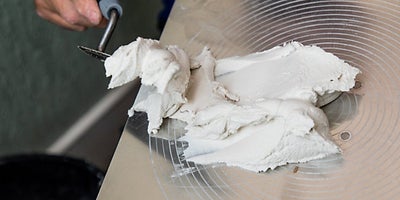
Cut a small section of plaster onto the plastering trowel and utilise to the repair with vertical and horizontal movements. Press firmly to work the plaster into the damaged area.
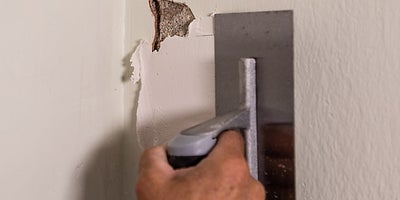
Following the manufacturer's instructions, exit the plaster to dry. Once the plaster is dry, use a spray gun or paint brush to dampen the surface with clean water.
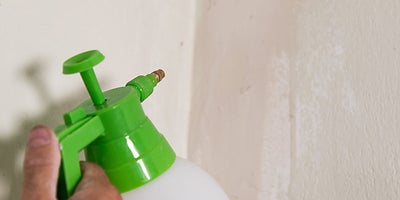
Using the edge of a clean trowel, work across the plaster repair to smooth the finish. Repeat this process if advised past the manufacturer.
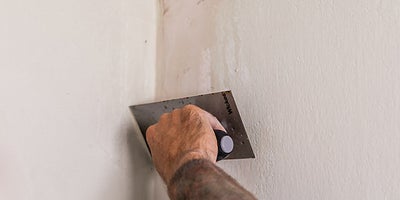
Repair small holes in plasterboard
Check the expanse around the repair with a cable, pipe & stud detector to make certain information technology'southward safe to cut through the old plasterboard.
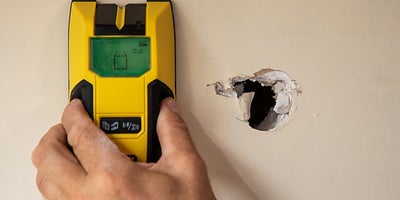
Measure the hole then clearly mark the measurements onto a piece of plasterboard offcut.
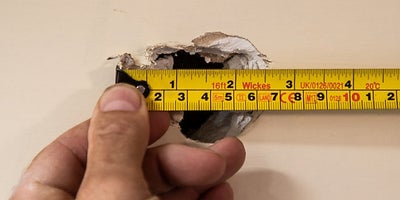
Add together an extra 25mm at the meridian and lesser, so cutting the offcut to size with a plasterboard saw or retractable knife.
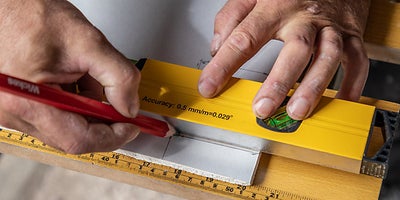
Using a pencil and direct edge, mark the original measurements (without the boosted 25mm overhangs) onto the wall.
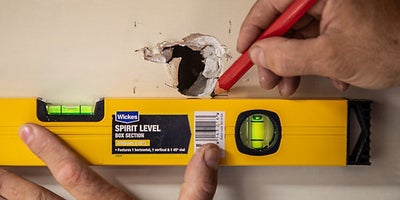
Draw diagonal lines from the hole into each corner. Then, use a plasterboard saw to cut along the diagonal lines.
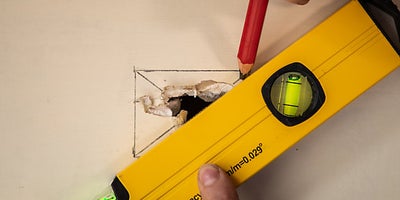
Using a retractable pocketknife and straight edge, score the plasterboard forth the guide marks and remove the excess plasterboard.

Drill a hole that is big enough to easily accommodate a nail into the heart of the plasterboard offcut. Then place a smash into the hole.
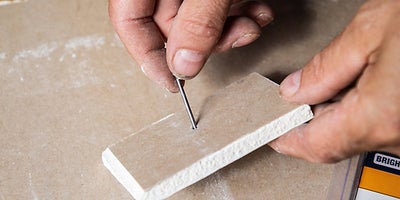
Apply a bead of take hold of adhesive to the 25mm overhang at the acme and lesser of the offcut and carefully slide the offcut through the hole and into position.
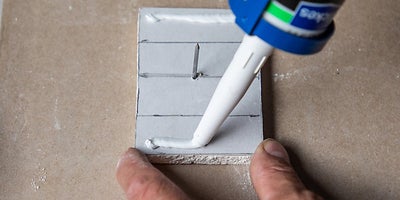
Pull the blast towards y'all to create a strong bail betwixt the adhesive and the plasterboard. Don't allow become of the nail until the adhesive has bonded. Let the adhesive to dry fully before continuing.
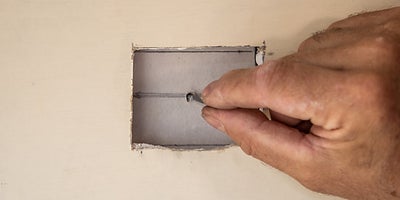
In one case the agglutinative has dried, push the nail out and so it falls behind the plasterboard.
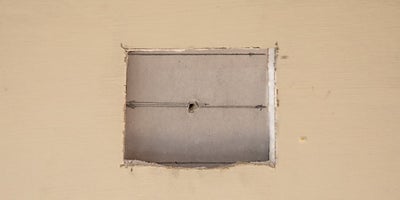
Mix and apply the repair plaster or ready mixed filler. Apply to the hole with a flexible filling knife, working both vertically and horizontally and ensuring you fill the pigsty until level with the plasterboard.
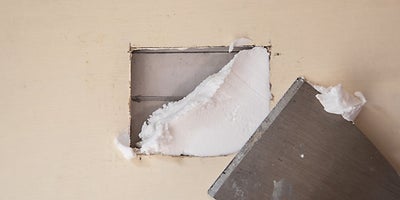
When dry, use medium grade sandpaper and sanding cake to create a smooth, level finish.
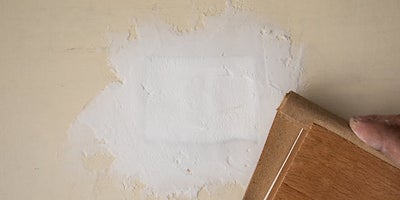
Repair large holes in plasterboard
To make sure information technology's safe to piece of work, bank check around the repair area with a cable & pipage detector.
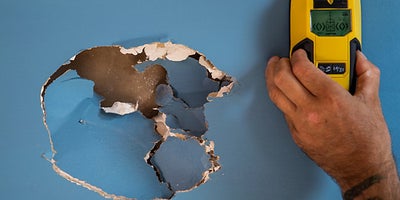
Use a stud detector or place a metallic ruler inside the pigsty to locate the position of the studs on both sides. Mark roughly where the centre of the studs are onto the plasterboard wall.
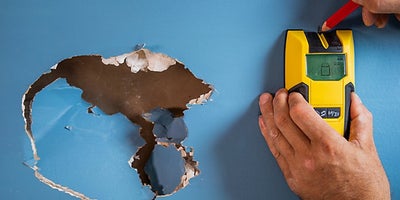
Using a directly border or spirit level, extend the marks and draw vertical lines that run higher and lower than the damaged surface area.

Then, draw horizontal lines 50mm to a higher place and below the damaged expanse, and so they bring together to the vertical lines and create a rectangle.
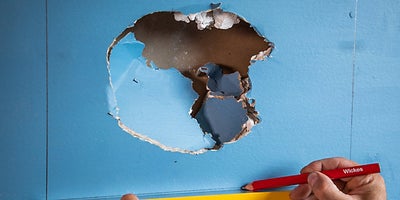
Marking diagonal lines into each corner and cut along them with a plasterboard saw.

Use a retractable knife and directly edge to score along the horizontal and vertical lines so you tin remove the entire damaged area.
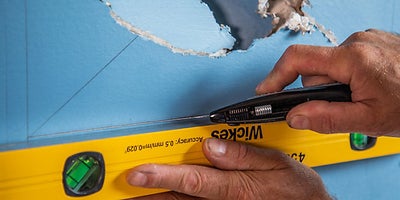
Mensurate the distance between the two studs and cut two lengths of batten to size.
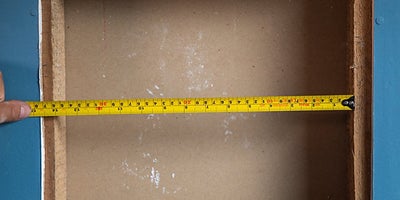
First, drill the airplane pilot holes. And so, using a combi-drill, secure the batten in position by skewing 40mm screws through the batten and into the studs to create back up noggings at the summit and bottom of the pigsty.

Advisedly mensurate and cutting a section of plasterboard to fit the space.
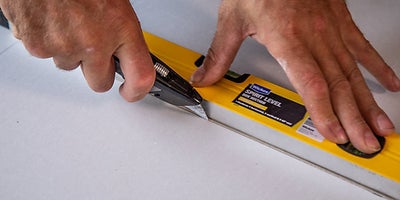
Attach the section of plasterboard to the studs and noggings with 32mm drywall screws.
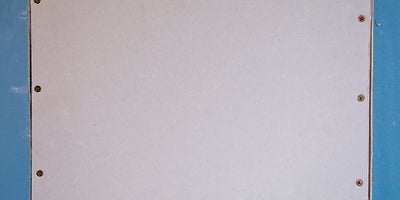
Then, secure the original plasterboard to the studs and noggings with 32mm drywall screws.
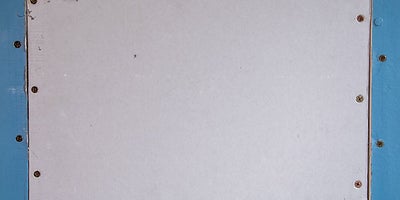
To help brand the seam invisible and to prevent future cracking, carefully utilise jointing record, then that the tape overlaps the join.
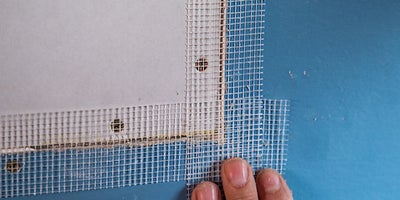
Post-obit the manufacturer'due south instructions, mix the finishing plaster. Apply it with a plasterer's finishing trowel, ensuring all the jointing tape is covered.
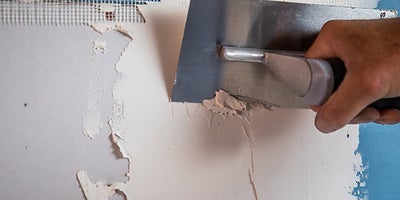
Let to dry and then utilise medium class sandpaper and a sanding cake to create a smoothen and level surface.
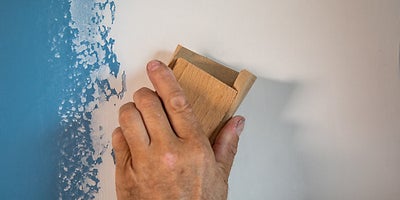
Source: https://www.wickes.co.uk/how-to-guides/home-maintenance/repair-a-wall
Posted by: anthonymadmon.blogspot.com


0 Response to "How To Repaire Plaster Wall"
Post a Comment